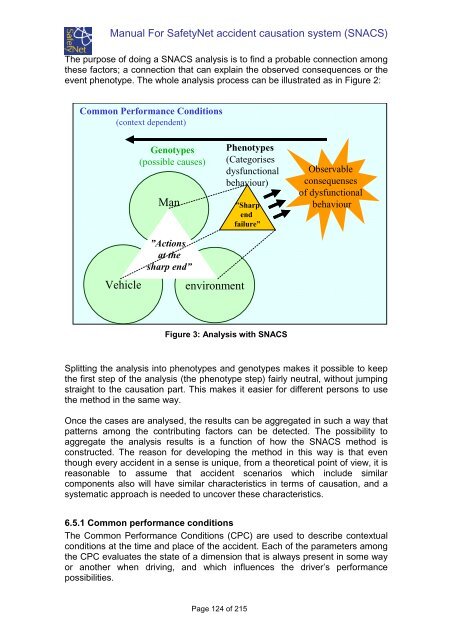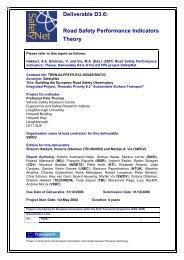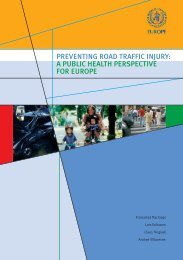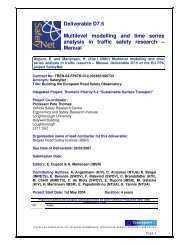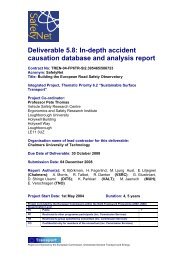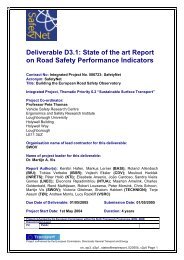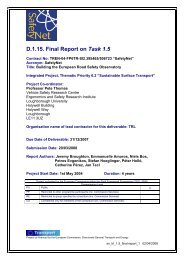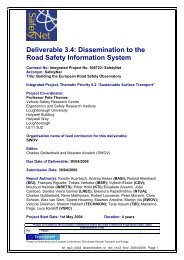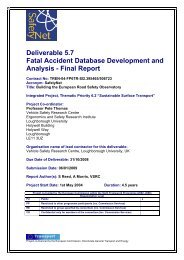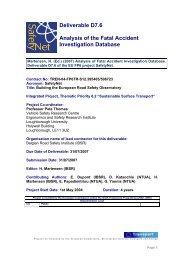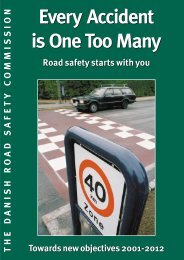Glossary of Data Variables for Fatal and accident causation ... - ERSO
Glossary of Data Variables for Fatal and accident causation ... - ERSO
Glossary of Data Variables for Fatal and accident causation ... - ERSO
You also want an ePaper? Increase the reach of your titles
YUMPU automatically turns print PDFs into web optimized ePapers that Google loves.
Manual For SafetyNet <strong>accident</strong> <strong>causation</strong> system (SNACS)<br />
The purpose <strong>of</strong> doing a SNACS analysis is to find a probable connection among<br />
these factors; a connection that can explain the observed consequences or the<br />
event phenotype. The whole analysis process can be illustrated as in Figure 2:<br />
Common Per<strong>for</strong>mance Conditions<br />
(context dependent)<br />
Genotypes<br />
(possible causes)<br />
Man<br />
Phenotypes<br />
(Categorises<br />
dysfunctional<br />
behaviour)<br />
”Sharp<br />
end<br />
failure”<br />
Observable<br />
consequenses<br />
<strong>of</strong> dysfunctional<br />
behaviour<br />
Vehicle<br />
”Actions<br />
at the<br />
sharp end”<br />
environment<br />
Figure 3: Analysis with SNACS<br />
Splitting the analysis into phenotypes <strong>and</strong> genotypes makes it possible to keep<br />
the first step <strong>of</strong> the analysis (the phenotype step) fairly neutral, without jumping<br />
straight to the <strong>causation</strong> part. This makes it easier <strong>for</strong> different persons to use<br />
the method in the same way.<br />
Once the cases are analysed, the results can be aggregated in such a way that<br />
patterns among the contributing factors can be detected. The possibility to<br />
aggregate the analysis results is a function <strong>of</strong> how the SNACS method is<br />
constructed. The reason <strong>for</strong> developing the method in this way is that even<br />
though every <strong>accident</strong> in a sense is unique, from a theoretical point <strong>of</strong> view, it is<br />
reasonable to assume that <strong>accident</strong> scenarios which include similar<br />
components also will have similar characteristics in terms <strong>of</strong> <strong>causation</strong>, <strong>and</strong> a<br />
systematic approach is needed to uncover these characteristics.<br />
6.5.1 Common per<strong>for</strong>mance conditions<br />
The Common Per<strong>for</strong>mance Conditions (CPC) are used to describe contextual<br />
conditions at the time <strong>and</strong> place <strong>of</strong> the <strong>accident</strong>. Each <strong>of</strong> the parameters among<br />
the CPC evaluates the state <strong>of</strong> a dimension that is always present in some way<br />
or another when driving, <strong>and</strong> which influences the driver’s per<strong>for</strong>mance<br />
possibilities.<br />
Page 124 <strong>of</strong> 215


